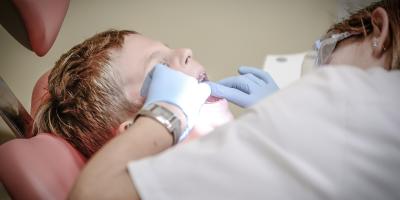The number of nurses and midwives [obstetric nurses] is continually decreasing – more individuals are leaving the job, e.g. taking retirement, than embarking on the career. According to the nurses’ self-government in the near future people practising the job could become in short supply in Poland.
The Head Chamber of Nurses and Midwives (in mid 2013) presented a report from which it emerges that the number of nurses in Poland is rapidly falling. This is especially alarming ,because, according to demographic prognoses, the number of patients is expected to grow year-on-year due to the ageing of society and the development of civilisational diseases.
The low rate of practising nurses
According to the report, there are currently around 250 thousand female nurses, 4.6 thousand male nurses and 30 thousand midwives. However, this does not mean that all of them are currently working – some of them are unemployed, and some are on maternity or child care leave. It appears from of NIPiP data that in the year 2011 there were 192 thousand nurses and 22 thousand midwives in current employment.
The rate of practising nurses and midwives per thousand inhabitants in Poland is 5.59 and now it is already one of the lowest in Europe.
Forecasts of nurses’ self-government indicates that by the year 2020 the number of registered nurses will have decreased by over 20 thousand and by the year 2035 by an additional 40 thousand. By then the rate of employed nurses and midwives per thousand inhabitants is going to reach 4.17.
The average age of nurses and the number of graduates
According to the President of the Head Chamber of Nurses and Midwives Grażyna Rogala-Pawelczyk, the current situation is already dramatic and in the coming years it may be expected to become catastrophic.
It results from the report that the average age of a nurse is currently 45.6 years and that of a midwife 44.5 years, and growing fast.
The number of nurses aged 50-60 (those who are going to retire in the next several years) is 76,489 and in the youngest age group – from 21 to 30 years old – it is 16,659.
As the nurses’ self-government states, in the last few years the vocational colleges and university-level studies in nursing have been annually graduated from by 6-7 thousand people. Yet, only a third of these graduates have reported to the regional councils of nurses and midwives to obtain the certificate of the right to practise the job – the rest have not decided to embark on this career.
Why nurses have started to be in short supply
As estimated by the nurses’ self-government, such extreme statistical data have been due to, inter alia, the relatively low level of nurses’ remuneration.
Yet, this is not the only factor which has had a demotivational influence on starting in the job. It is also about the working conditions of nurses and midwives, such as working shifts, huge responsibilities and the stress related to this, too many duties and too many patients in their care.
The work requires both extensive knowledge and experience, and also continued training. Also, physical fitness is important.
The NIPiP warns that the decrease in the number of nurses with the concurrent rise in the number of patients – especially the elderly, who require constant, professional nursing – results in a real threat of the lack of such care for a significant group of citizens. This may especially affect those with lower incomes.
As stressed by the head of the nurses’ self-government, it is necessary to employ solutions which would encourage young people to choose the profession of a nurse or a midwife.









Comments (0)